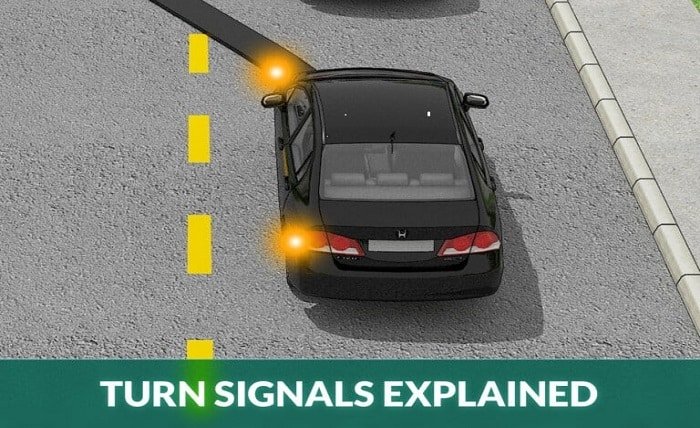
Turn signals are an essential component of vehicle safety, facilitating clear communication between drivers on the road. This post examines the various locations and designs of turn signals, highlighting how they have evolved over the years.
The Origin of Turn Signals
The concept of turn signals dates back to the early 20th century. Initially, these signals were simple, manually operated devices that informed others of a driver’s intention to turn. The evolution from these rudimentary forms to today’s automated, electronic signals is a fascinating journey.
Standard Placement in Modern Vehicles
Typically, in modern vehicles, turn signals are found integrated within the headlight and tail light assemblies. This integration helps in maximizing visibility and ensuring that the signals are noticed promptly by other road users.
Variations by Vehicle Type
The placement and style of turn signals can vary significantly across different types of vehicles. For instance, motorcycles, trucks, and cars may have distinct turn signal designs and locations, tailored to the specific needs and safety standards of each vehicle type.
The Role of Legislation in Turn Signal Design
Government regulations play a crucial role in determining where turn signals are placed on vehicles. These laws ensure that the signals are visible from certain angles and distances, which is vital for road safety.
Technological Advancements in Turn Signals
Advancements in technology have introduced features like LED lights, which are not only brighter but also more energy-efficient. This section discusses how these technologies have influenced the design and functionality of turn signals.
Turn Signals in Luxury vs. Economy Models
The disparity in turn signal technology and placement between luxury and economy models can be significant. Luxury vehicles often feature more advanced, aesthetically pleasing turn signals that may include dynamic lighting patterns.
The Impact of Turn Signals on Road Safety
Effective communication via turn signals drastically reduces the chances of accidents on the road. This part explores statistical data and studies supporting the importance of well-designed turn signals in enhancing road safety.
Future Trends in Turn Signal Technology
Emerging technologies like autonomous vehicles and connected car systems might change where and how turn signals are used. This section speculates on future trends and their potential impacts on vehicle communication systems.
Aesthetic Considerations in Turn Signal Design
Beyond functionality, the aesthetic integration of turn signals with the vehicle’s design is becoming increasingly important. Designers face the challenge of blending efficiency with style, especially in high-end models.
International Differences in Turn Signal Design
Different countries may have unique requirements and standards for turn signals. This segment compares how various international standards influence the design and placement of these crucial safety features.
Conclusion
Turn signals are a vital part of vehicle design and safety. From their humble beginnings to the high-tech versions found on modern vehicles, turn signals have undergone significant transformations. As technology advances, so too will the capabilities and features of turn signals, continuing to improve road safety and communication between drivers.
FAQs
1. Why are turn signals integrated with headlights and taillights?
Integrating turn signals with headlights and taillights enhances their visibility, making it easier for other drivers to notice and react to the signals.
2. How do turn signal designs differ between motorcycles and cars?
Motorcycles typically have separate turn signal units that are smaller and more discrete compared to cars, where turn signals are often part of larger light assemblies.
3. What technological advancements are affecting turn signal designs?
LED technology, dynamic lighting patterns, and integration with vehicle communication systems are some of the advancements that are shaping modern turn signal designs.
4. Are there legal requirements for turn signal visibility?
Yes, most countries have specific regulations that dictate the visibility range and angles from which turn signals must be visible to ensure they meet safety standards.
5. How might turn signals evolve with autonomous vehicles?
As vehicles become more autonomous, turn signals could integrate more with sensor and communication technologies to automatically signal intentions not just to drivers, but also to pedestrians and other connected vehicles.





